#polyunsaturated fat
Explore tagged Tumblr posts
Photo

...and the family’s deaths were to put it mildly, gruesome.
#vintage advertising#mazola#mazola corn oil#mazola margarine#polyunsaturated fat#cooking oil#healthy eating#corn oil
4 notes
·
View notes
Text
An unintended consequence of partial hydrogenation of the alkene groups in polyunsaturated oils is the isomerisation of a small proportion of the cis alkenes to trans alkenes. These are known as trans-fats and are of concern as they are believed to increase the risk of coronary heart disease. These trans-fats do occur naturally, although only to a small extent. Canola oil naturally has a relatively high level of trans-fats, but most other natural oils have very little trans-fat. Lamb and mutton also naturally contain moderate levels of trans-fats.
"Chemistry" 2e - Blackman, A., Bottle, S., Schmid, S., Mocerino, M., Wille, U.
#book quote#chemistry#nonfiction#textbook#unintended consequences#hydrogenation#alkene#polyunsaturated#oils#isomerization#cis#trans#trans fat#coronary heart disease#risks#canola oil#natural oil#lamb#mutton
2 notes
·
View notes
Text
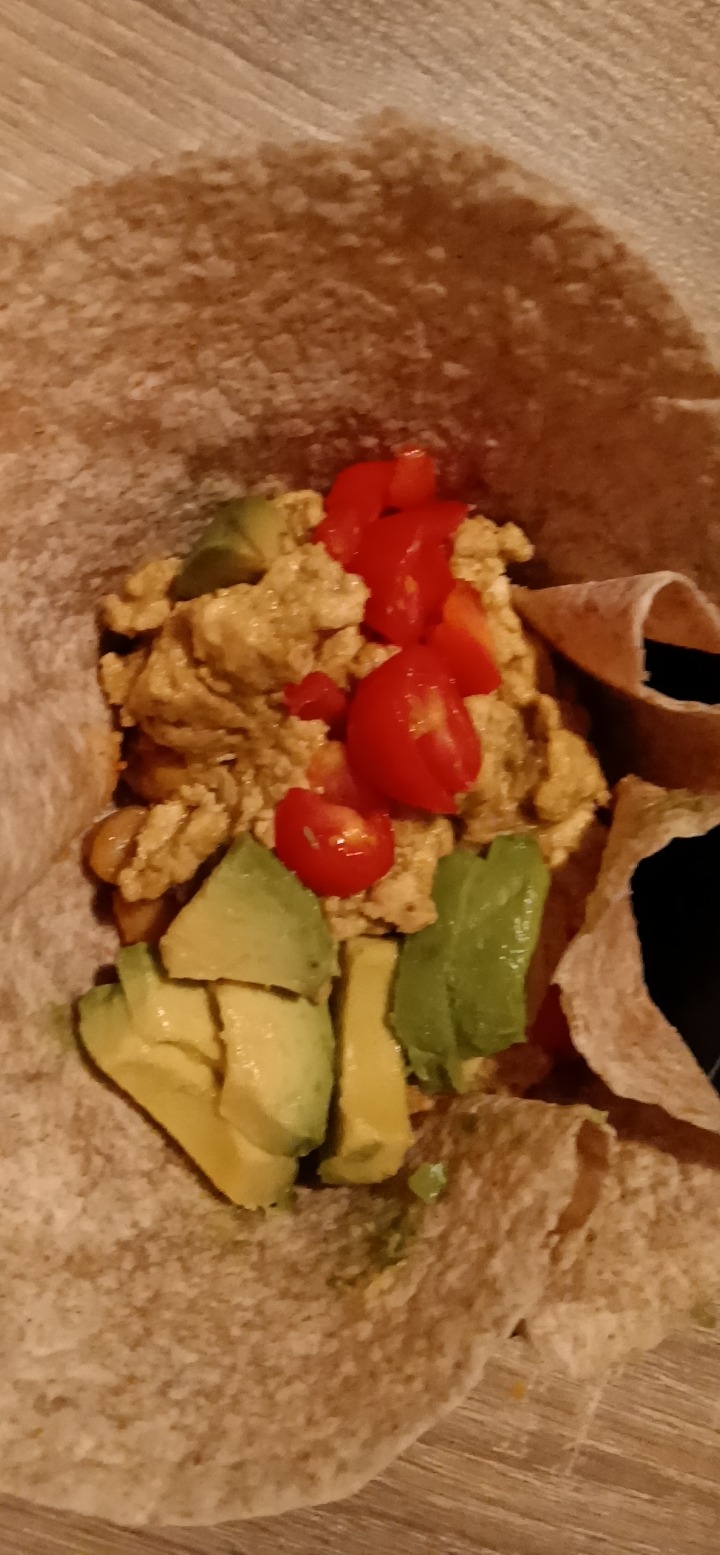


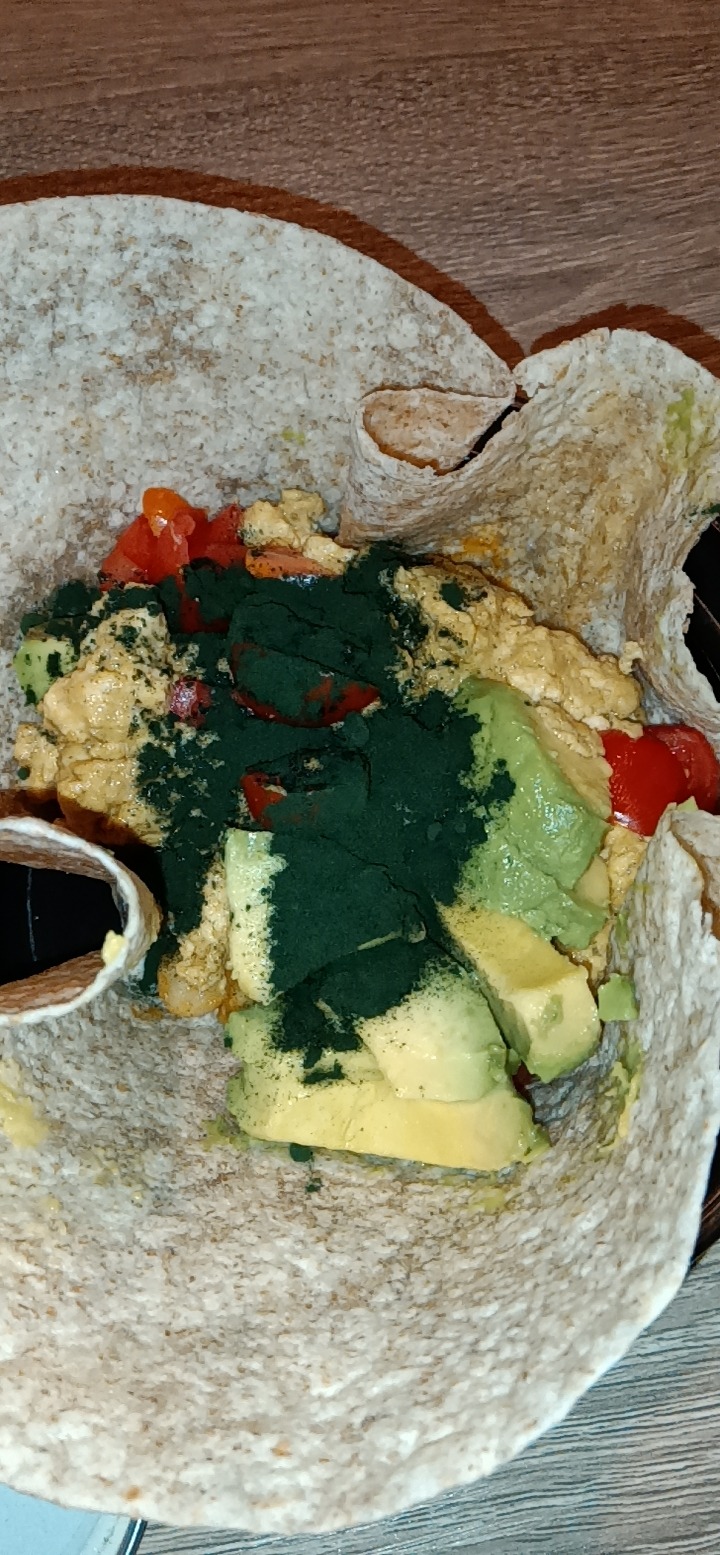
I will post my chickpeas recipe and tofu scrambled eggs
#veganlife#vegan eats#diet plan#high protein#high polyunsaturated fats#high monounsaturared fats#health and wellness
1 note
·
View note
Text
The Role of Fats in the Body and How to Make Healthy Choices
Fats are an essential nutrient that play a crucial role in our overall health and well-being. However, not all fats are created equal. #healthyfats #nutrition #healthychoices #healthylifestyle #foodblog #wellness #nutritiontips #healthyhabits #eatclean
Today we talk about fats and the role they pay in your daily eating habits. The Role of Fats in the Body Fats have long been portrayed as a bad dietary ingredient that is to blame for everything from heart disease to weight gain. However, the body requires particular types of fats to function properly, and not all fats are created equal. We’ll look at the role that fats play in the body and…

View On WordPress
#Fats#Healthy Choices#Monounsaturated Fats#Omega-3#Omega-6#Polyunsaturated Fats#Saturated Fats#Trans Fats
0 notes
Note
When are we gonna see some fat girl flexing? 💪🫠
my very demure very cutesy pump after hitting arms today for 45 minutes
felt so good I love weight lifting grrrr!!! I’m gonna do some more hammer curls tonight lol
this is the year I lock in and become an absolute monster.. 👹 may 1 will be my 1 year anniversary of non stop weight training! I took January off (before today) on doctors orders and I’m so hype to be able to lift again. It’s the stress relief I crave 🥰


Post pump meal really hit the spot lol, had all of it except a couple bites of my chick’n tendies and I’m gonna finish it soon with a 50g protein shake and a bowl of Greek yogurt with cheesecake pudding mix and berries blended in 😋😋
** I know I consume a lot of fat but it’s mostly all polyunsaturated!! I gotta keep it up for the next 2 months to help my fat transfer heal and then I can ease off, no need to worry about my cholesterol haha**
92 notes
·
View notes
Text
Fat tip number 5 (pt 2): what type of fat should I eat?
Although there are many types of fat in foods such as: saturated fats, trans fat, mono saturated fat, polyunsaturated fat, and omega-3. The most important of the fats that we will be learning about are trans fat, saturated fat, and polyunsaturated fat. Now, why is this important, you may ask? Well, my piggies, this is a defining factor to whether or not you will be eating to an early grave.
Starting with the death piggies, the best fat you can enjoy and ensure your arteries get clogged up is to eat a bunch of trans fat and saturated fats. Starting with the best heart stopper of all: trans fats are well known for causing clogged blood vessels, heart complications, increased chance of insulin resistance, and inflammation. Some foods with trans fats include: fried food, cakes, ice cream, pizza, and microwave popcorn. Ya know, the process junk.
Saturated fats are much easier to find in everyday food, mainly comprised of animal fat, you only need to eat 25g of Saturated fat daily to be moderately healthy, to put this onto perspective on how easy it is to go above 25g... one apple fritter contains roughly 20-25g of Saturated fat, so just eating 2 will be above the recommended amount. Now this will only increase the rate of obesity but it will not kill you as fast compared to trans fat.

Now for some good and healthy fat! This is actually fairly straightforward, stay away from the unhealthy fats mentioned above and eat more veggies and meat. This will improve your overall health, and when eaten in excess, it will grow more subcutaneous fat which is very beneficial for you fatties!
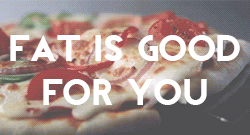
#feedee encouragement#feeding kink#feedee girl#feed me#fatty piggy#feedee belly#fat#fatty#death feederism#death feedist#fatty getting fatter#get fat
404 notes
·
View notes
Text
thick thighs SAVE LIVES.
when a cis woman is pregnant, her gluteofemoral fat is deposited into her developing baby's brain. fat continues to be deposited during nursing. the less fat deposited, the more the baby's brain development suffers. of all the primates, humans carry the most fat. We are the Fat Primate. We don't just carry fat for day to day support of our large brains, but for the very CREATION of those brains during pregnancy and nursing. long-chain polyunsaturated fatty acids (found in the butt and thigh region) are absolutely crucial for brain development, but they are very hard to come by in our diet, so cis female bodies start depositing them early just in case we want to be making babies later. it's.....humorous to me that so much talk of human evolution either speaks about human exceptionalism in vague terms or cuts out women entirely ("man the hunter" and the overemphasis on male tool use when female primates use tools at greater rates than males, see also our pseudo-scientific belief in a connection between intelligence and maleness when in fact there is no female brain or male brain) when cis female bodies and their cool fucking adaptions are responsible for giving us those large brains we're always bragging about. want to talk about our big brains? then cite your sources! the source in question here being women's body fat.
and then society turns around and goes, let's police women's fat and punish them for it and make them hate themselves so deeply that fatphobia becomes inextricable from our culture - all of this for one of the coolest most metal adaptions of all time that also arguably MADE us human.
fat is the coolest organ in the human body and I will not tolerate the hate.
64 notes
·
View notes
Text
You need to consume unsaturated fats or you'll feel slow, fatigued, and never want to do anything.
You have to learn the healthy fats and eat the healthy fats if you're committed to being vegetarian or vegan. Or you will be tired forever, and not the type of tired where you can push through it, but the type of tired where you feel like you have to stay in bed all day and your heart feels like it's being sucked through a straw.
Fatty acids are what lipids in our bodies are made mostly up of. Fatty acids are responsible for energy storage, brain development, blood clotting, and controlling inflammation. They are necessary for your body to be able to absorb vitamins such as vitamin A, D, E, and K. They are necessary for your body to produce sex hormones like testosterone and estrogen. Not having enough of these fats can cause muscle pain, night blindness, infertility, easy bruising, dry hair, hair loss, loose teeth, depression and anxiety, and dermatitis (presenting as dry and scaly rashes).
You need unsaturated fats such as monounsaturated and polyunsaturated fats. These are good fats. Saturated fats and trans fats are bad, these are what raise your risk of heart attacks and strokes. Diets high in saturated fats might also lead to chronic pain.
35% of your caloric intake should be fats. This can be added to the list on why the diet industry is so cruel. Manufacturers and organizations paired with the pornography and cosmetic industry pushing dieting and beauty norms on women and girls for decades impressed the seriously dangerous and false idea that consuming fats was bad. Denying healthy fats means denying healthy brain development, energy and motivation, better ability to heal from injuries, and preventing depression and anxiety.
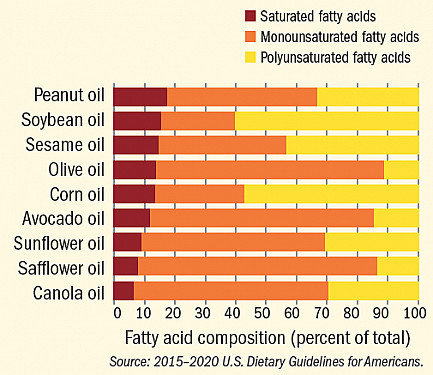
Balsamic and olive oil together (and you can add some minced garlic if you like) tastes fantastic with warm bread and can be made in 12 minutes.
Cooking with the oils above instead of butter can also introduce fatty acids in your diet (might not be enough though, you need 1-2 tablespoons a day).
Sometimes if I'm in a hurry I just eat a plain avocado a day.
You can sprinkle chia seeds on yogurt. Add flax seed to smoothies.
Just eat 1/4th of pumpkin seeds too (which are also super high in magnesium). That's basically a handful a day, make it part of your morning routine.
Almonds, walnuts, and pecans are also high in good fats.
122 notes
·
View notes
Text
Debunking Wellness Trends: Seed Oils
One aspect of the growing wellness trends on social media is the idea that seed oils are poisoning the population and need to be avoided to reach better health/heal health conditions/conserve fertility/etc. They’re being called “the hateful eight”, and there’s a lot of people doing the #seedoilfree lifestyle. Seed oils are being blamed for headaches, low immunity, disrupted attention and thinking, diabetes, and more.
(Seed oils include canola, corn, cottonseed, grapeseed, rice bran, safflower, soy and sunflower oil)
Toxicity Claims
Current scientific evidence does NOT support claims that seed oils are “toxic”.
Now, if you begin to cut out foods such as fried foods (like fries) or packaged snacks, you may feel better. A lot of people are attributing this feeling to removing seed oils, but these foods are usually high in refined carbohydrates, sodium and sugar which is why they’re associated with more negative health outcomes.
Another fear is that the “toxicity” comes from production byproducts. Heat and solvents like hexane are used to extract oil from seeds, which apparently introduces chemical additives and unstable molecules, which then can turn polyunsaturated fats into harmful trans fats. Realistically, hexane is a bigger threat to the environment and workers in case of inhalation – trace amounts in the oil are still being studied, but so far there’s no concerning data. They’re also heated for short periods, and actually have fewer trans fats than products like milk or butter.
Omega-6
Additionally, omega-6 (found in nuts and seeds, and a dominant polyunsaturated fat in seed oils) is also not “toxic”. In fact, it’s been scientifically linked to lower cholesterol, lower blood sugar and reduced heart disease risk. The argument against omega-6 is that it’s responsible for chronic inflammation – omega-6 linoleic acid is converted into arachidonic acid in the body, which is a component of inflammatory compounds. Only 0.2% of linoleic acid we eat turns into arachidonic acid, and not all the compounds cause inflammation – arachidonic acid is a complex molecule, and it also has some anti-inflammatory effects. Linoleic acid is also an essential fatty acid that our body can’t make itself, and we use it to produce cell membranes and for skin health.
Another claim is that our omega-3: omega-6 ratio is out of balance, and that this is because our ancestors ate a much more balanced ratio than we do today. We DO eat more omega-6 fats than omega-3, but the claim that we eat 20 to 50x more is misinformation – it’s closer to 10:1. Instead of cutting omega-6, the better solution is to try and introduce more omega-3 fats into your diet.
Realistically, a lot of the online discourse about seed oils is misunderstanding scientific reports + deliberate fear-mongering. If you do have concerns about something in your diet causing health issues, seek advice from a trained medical professional who can give you evidence-based ideas and solutions to help you!
(Some articles to start if you want to know more on this topic 1 2 3)
#ive been promising to say something about this forever lmao i finally got to it#wellness trends#<- my tag for this stuff#i honestly feel bad for people who i see getting anxious about these kinds of things!!! :((#katie rambles
126 notes
·
View notes
Text

NUTRITION JOURNALS: FATS
WHAT ARE FATS?
- fats can be broken down into four types; saturated, trans(-unsaturated), monounsaturated, and polyunsaturated. - saturated fats are typically solid at room temperature, and are found in animal-based foods such as beef, pork, poultry, full-fat dairy products, eggs and tropical oils, such as coconut and palm. saturated fats can cause problems with your cholesterol levels, which can increase your risk of heart disease. - naturally occurring trans fats are produced in the gut of some animals and foods made from these animals (like milk, cheese, and meat products) may contain small quantities of these fats. artificial trans fats (or trans fatty acids) are created in an industrial process that adds hydrogen to liquid vegetable oils to make them more solid. - monounsaturated fats work in two ways to improve your cholesterol. they lower your bad cholesterol levels, also called LDL cholesterol. they also help to raise your HDL good cholesterol levels. these can be found in things like avocado, canola oil, and olive oil and are considered healthy fats.
HOW DO FATS HELP WITH WEIGHT LOSS?
- healthy fats, sure. these nutrients promote satiety, making it easier to reduce your daily food intake; a 2017 study found that diets high in polyunsaturated fatty acids caused positive changes in fasting and postprandial physiological markers of satiety and hunger in as little as seven days. - high fat foods, such as avocado, tuna, salmon and olive oil, are more nutrient dense than high protein and high carb foods. That's why you feel full faster after eating peanut butter or walnuts rather than chips or cookies. If you go on a low carb diet, your body will use fat for fuel. - the fats in your food don’t automatically turn into body fat (adipose tissue). your body only stores fat if you take in more calories from protein, carbs or fats than your body needs to burn for energy.

#pierrot reviewed#nutrition journals#ed male#ed but not ed sheeran#ed rant#tw ed ana#tw ed not ed sheeren#tw 3d vent#tw ana bløg#ana advice#ed blr#ednotedsheeran#tw ana rant#boy ed#ed blogg#ed boy#ed diet tips#ed ftm#ed moots#ed nonsense#ed twt#edbr#ftm ed#male ed#trans ed#transmasc ed#tw ed implied#tw edtwt#ana male#ana tip
18 notes
·
View notes
Text
Cannabis: A Multifaceted Plant for a Multitude of Uses
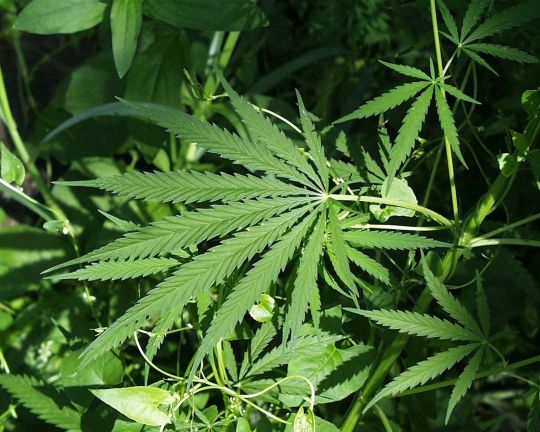
Introduction
Cannabis, a plant that has been a part of human history for thousands of years, is experiencing a resurgence in popularity as its myriad of uses become increasingly recognised. From its strong fibres used in textiles and paper to its nutritional and medicinal properties, cannabis has proven itself to be a truly multipurpose plant. This article will delve into the various aspects of this versatile plant and explore how it has been utilised throughout history and across cultures.
The History of Hemp: A Material with Unmatched Strength
One of the most well-known uses of cannabis is in the production of hemp, a material derived from the plant's strong fibres. These fibres have been used for millennia to create durable cloth, rope, and paper. The Vikings, known for their seafaring prowess, utilised hemp to construct sails for their ships, enabling them to voyage from Scandinavia to Nova Scotia. In the United States, Betsy Ross sewed the first flag from hempen cloth, and the Declaration of Independence was written on hemp paper. Even the now obsolete German currency, Deutsche Mark, were once printed on hemp paper.
The use of hemp extended beyond these applications, as seen in the Netherlands, where windmills were built specifically to crush hemp stalks. This demonstrates the importance of hemp in various industries and highlights the plant's incredible versatility.
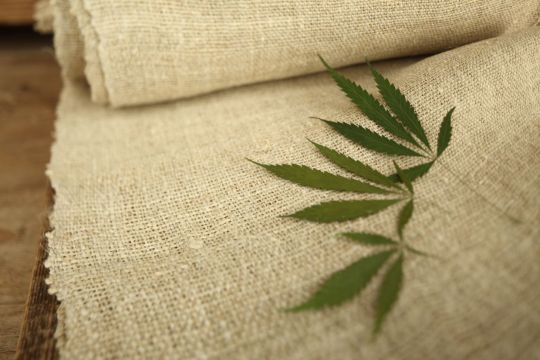
Cannabis as a Nutritional Powerhouse
While the strength of its fibres may have initially attracted humans to the cannabis plant, its potential as a food source likely played a significant role in its widespread cultivation. Cannabis seeds, or hempseeds, are packed with essential nutrients such as polyunsaturated fats, essential fatty acids, and proteins. These qualities qualify hempseed as a functional food, meaning it provides health benefits beyond basic nutrition.
For over three thousand years, Asian cultures have utilised hempseed as both a food and a medicine. Despite the prohibition of cannabis products in the United States, hempseed has been allowed for use in food over the last two decades. This highlights the recognition of its nutritional value and potential health benefits.

Cannabis Resin: A Source of Medicinal and Psychoactive Compounds
The resin produced by the cannabis plant is another aspect that has garnered significant attention due to its medicinal and psychoactive properties. The compounds found in cannabis resin, such as THC (tetrahydrocannabinol) and CBD (cannabidiol), have been the focus of breeding efforts to increase their production. These efforts have led to the development of various cannabis drug chemotypes around the world, with some cultivars producing only THC, others producing both THC and CBD, and a few expressing propyl THCV (tetrahydrocannabivarin) and/or CBDV (cannabidivarin).
The medicinal uses of cannabis resin have been widely researched, with evidence suggesting its effectiveness in treating conditions such as chronic pain, epilepsy, multiple sclerosis, and more. The psychoactive effects of THC have also led to the recreational use of cannabis, which has sparked debates surrounding its legalisation and regulation.
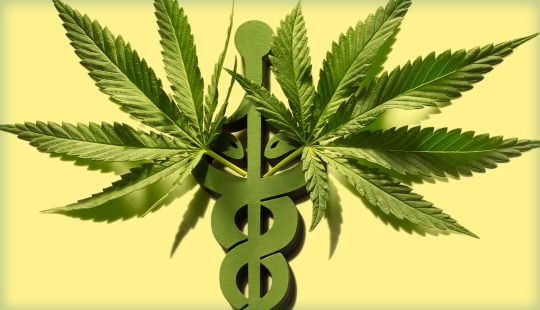
Environmental Benefits of Cannabis Cultivation
In addition to its myriad uses, cannabis cultivation offers several environmental benefits. Hemp plants are known to absorb large amounts of carbon dioxide, making them an effective tool in combating climate change. Furthermore, hemp requires fewer pesticides and herbicides than many other crops, reducing the environmental impact of agriculture.
Cannabis can also be used as a source of biofuel, offering a renewable and eco-friendly alternative to fossil fuels. Additionally, the fast growth rate and low water requirements of hemp make it a sustainable crop, capable of providing resources without causing significant strain on natural resources.
Conclusion
Cannabis is a truly remarkable plant, with applications ranging from textiles and paper to nutrition and medicine. As society continues to recognise its numerous benefits, it is likely that the cultivation and use of cannabis will only continue to grow. By embracing this versatile plant, we can harness its potential to improve our health, industries, and environment for generations to come.
#cannabis#cannabismedicine#cannabishistory#medical cannabis#cbd#feelgreatagain#cbdoil#budandtender#health#endocannabinoidsystem
101 notes
·
View notes
Text
Story at-a-glance
Americans today have significantly lower metabolic rates than their ancestors did, despite similar calorie consumption. In the 1940s Minnesota Starvation Experiment, lean men maintained their weight on 3,500 calories per day with moderate activity, while modern calculators suggest they should need only 2,000 to 2,400 calories
Research by Dr. John Speakman shows that basal metabolic rate (BMR) has declined significantly over time, while Active Energy Expenditure (intentional exercise) has actually increased, contradicting the common belief that we simply move less than our ancestors
Currently, approximately 73% of American adults are either overweight (30.7%) or obese (42.4%). This is a major public health crisis that cannot be explained by reduced physical activity alone
The dramatic increase in polyunsaturated fatty acid (PUFA) consumption since 1909 (up 238%) has likely contributed to decreased metabolic rates, as these fats can downregulate metabolism compared to the saturated fats our ancestors consumed
Average body temperatures in the United States have been steadily declining since the Industrial Revolution, providing additional evidence of decreasing metabolic rates across the population
11 notes
·
View notes
Text
My favorite scientific law is Coles Law which states that In a small dish, prepare the dressing by whisking together mayonnaise, sugar, vinegar, salt, and black pepper.
⅔ cup (160 g) mayonnaise, 1 ½ Tablespoons granulated sugar, 1 ½ Tablespoons apple cider vinegar, ¼ teaspoon table salt, ¼ teaspoon black pepper
In a large bowl, toss together green and purple cabbage and shredded carrots.
3 cups (240 g) shredded green cabbage, 1 cup (75 g) shredded purple cabbage, 1 cup (100 g) peeled, shredded carrots
Drizzle dressing over cabbage/carrot mixture and toss/stir until ingredient are thoroughly combined and all cabbage/carrots are coated with dressing. Taste-test and add more salt and pepper as needed.
Cover and refrigerate for at least 1 hour before serving (for best flavor).
Notes
Storing
Store in an airtight container in the refrigerator for 3-5 days.
Using pre-shredded cabbage mix
You may substitute a 14oz bag of shredded coleslaw mix for the cabbage and carrots listed in the recipe.
Nutrition
Serving: 1serving | Calories: 206kcal | Carbohydrates: 9g | Protein: 1g | Fat: 19g | Saturated Fat: 3g | Polyunsaturated Fat: 11g | Monounsaturated Fat: 4g | Trans Fat: 1g | Cholesterol: 10mg | Sodium: 266mg | Potassium: 127mg | Fiber: 2g | Sugar: 7g | Vitamin A: 228IU | Vitamin C: 22mg | Calcium: 25mg | Iron: 1mg
Nutritional information is based on third-party calculations and should be considered an estimate only. Actual nutritional content will vary based upon brands used, measuring methods, cooking method, portion sizes, and more.
7 notes
·
View notes
Text
1. [어머니가 만들어 주신 반찬], [Side dishes made by mom], [Acompanhamentos feitos pela mamãe]
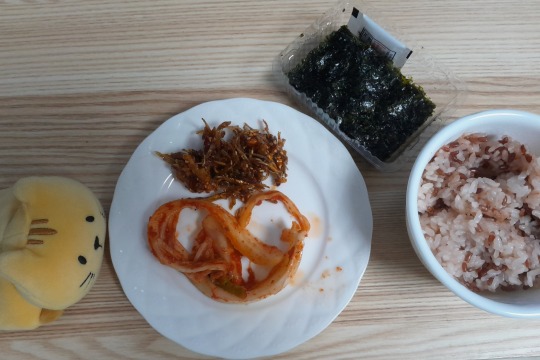
2. [맛 평가], [Taste evaluation], [Avaliação do sabor]
ko: 고추장 멸치 볶음은 달고, 김치도 달다. 하지만 김은 조금 짜다. 그야말로 정말 맛있는 조합이다. 단맛과 짠맛이 잘 조합이 되어 너무나 맛있게 식사를 할 수 있었다.
en: The anchovy stir-fry with gochujang is sweet, and the kimchi is sweet, too. But the seaweed is a little salty. It's a really delicious combination. The sweetness and saltiness go so well together that I was able to enjoy a very delicious meal.
pt [br]: O refogado de anchova com gochujang é doce, e o kimchi também é doce. Mas a alga é um pouco salgada. É uma combinação realmente deliciosa. A doçura e a salinidade combinam tão bem que consegui aproveitar uma refeição muito deliciosa.
3. [영양성분], [Nutritional Information], [Informação nutricional]
(1) 밥
사이즈 [1인분] 200g
열량 220 칼로리
탄수화물 38.96g
설탕 2.30g
단백질 7.28
지방 3.82
포화지방 0.884g
다불포화지방 1.048g
불포화 지방 1.388g
콜레스테롤 66mg
식이섬유 2.8g
나트륨 156mg
칼륨 312mg
(2) 김
사이즈 [1인분] 5g
열량 25 칼로리
탄수화물 2g
단백질 1g
지방 2.3g
식이섬유 1g
나트륨 78mg
(3) 견과류 양념 멸치볶음
사이즈 [인분] 20g
열량 51.2 [1인분]
탄수화물 3.6g
설탕 0.48g
단백질 38.8g
지방 19.24g
포화지방 3.674g
다불포화지방 5.266g
불포화 지방 8.498
콜레스테롤 98mg
나트륨 4696mg
칼륨 724mg
(4) 김치
사이즈 [1인분] 38g
열량 8 칼로리
탄수화물 1.58g
설탕 0.7g
단백질 0.66g
지방 0.12g
포화지방 0.018g
다불포화지방 0.056g
불포화 지방 0.017g
식이섬유 0.5g
나트륨 245mg
칼륨 98mg
---------------------------
(1) Rice
Size [1 serving] 200g
Calories 220 calories
Carbohydrates 38.96g
Sugar 2.30g
Protein 7.28
Fat 3.82
Saturated fat 0.884g
Polyunsaturated fat 1.048g
Unsaturated fat 1.388g
Cholesterol 66mg
Dietary fiber 2.8g
Sodium 156mg
Potassium 312mg
(2) Seaweed
Size [1 serving] 5g
Calories 25 calories
Carbohydrates 2g
Protein 1g - Fat 2.3g
Dietary fiber 1g
Sodium 78mg
(3) Stir-fried anchovies with nut seasoning
Size [1 serving] 20g
Calories 51.2 [1 serving]
Carbohydrates 3.6g
Sugar 0.48g
Protein 38.8g
Fat 19.24g
Saturated Fat 3.674g
Polyunsaturated Fat 5.266g
Unsaturated Fat 8.498
Cholesterol 98mg
Sodium 4696mg
Potassium 724mg
(4) Kimchi
Size [1 serving] 38g
Calories 8 calories
Carbohydrates 1.58g
Sugar 0.7g
Protein 0.66g
Fat 0.12g
Saturated Fat 0.018g
Polyunsaturated Fat 0.056g
Unsaturated Fat 0.017g
Dietary Fiber 0.5g
Sodium 245mg
Potassium 98mg
-------------------------------------------------
(1) Arroz
Tamanho [1 porção] 200g
Calorias 220 calorias
Carboidratos 38,96g
Açúcar 2,30g
Proteína 7,28
Gordura 3,82
Gordura saturada 0,884g
Gordura poliinsaturada 1,048g
Gordura insaturada 1,388g
Colesterol 66mg
Fibra alimentar 2,8g
Sódio 156mg
Potássio 312mg
(2) Algas marinhas
Tamanho [1 porção] 5g
Calorias 25 calorias
Carboidratos 2g
Proteína 1g
Gordura 2,3g
Fibra alimentar 1g
Sódio 78mg
(3) Anchovas salteadas com tempero de nozes
Tamanho [1 porção] 20g
Calorias 51,2 [1 porção]
Carboidratos 3,6g
Açúcar 0,48g
Proteína 38,8g
Gordura 19,24g
Gordura saturada 3,674g
Gordura poliinsaturada 5,266g
Gordura insaturada 8,498
Colesterol 98mg
Sódio 4696mg
Potássio 724mg
(4) Kimchi
Tamanho [1 porção] 38g
Calorias 8 calorias
Carboidratos 1,58g
Açúcar 0,7g
Proteína 0,66g
Gordura 0,12g
Gordura saturada 0,018g
Gordura poliinsaturada 0,056g
Gordura insaturada 0,017g
Fibra alimentar 0,5g
Sódio 245mg
Potássio 98mg
----------------------------------------------------
#food#food pics#breakfast#Mom's side dish#음식사진#음식#엄마의 반찬#Comida#Acompanhamento da mamãe#Café da manhã#fotografia de comida
3 notes
·
View notes
Text

Keto Orange Chicken 🍗😋
Prep Time: 20minutes minutesCook Time: 30minutes minutesTotal Time: 50minutes minutes Servings: 4 Calories: 328
🙏 𝔽𝕠𝕝𝕝𝕠𝕨 𝕗𝕠𝕣 𝕞𝕠𝕣𝕖 🔃 𝕊𝕙𝕒𝕣𝕖 𝕨𝕚𝕥𝕙 𝕗𝕣𝕚𝕖𝕟𝕕𝕤 𝕒𝕟𝕕 𝕗𝕒𝕞𝕚𝕝𝕪 𝕞𝕖𝕞𝕓𝕖𝕣𝕤 𝕨𝕙𝕠 𝕟𝕖𝕖𝕕 𝕚𝕥.
Ingredients
▢1 ½ pounds boneless skinless chicken breast cut into bite sized pieces
▢1 ½ cups pork rind crumbs
▢2 large eggs
▢2 tablespoons heavy whipping cream
▢salt and pepper to taste
▢oil for frying
Sauce:
▢2 teaspoons minced garlic
▢1 teaspoon ginger paste
▢½ teaspoon sesame oil
▢3 tablespoons water
▢2 tablespoons soy sauce
▢⅓ cups brown sugar substitute
▢zest from one orange
▢2 tablespoons fresh orange juice
▢¼ cup white vinegar
Instructions
Cover the bottom of a large skillet with oil, and heat over medium high heat.
Combine eggs and heavy whipping cream in a small bowl.
Dip the chicken pieces into the egg mixture and then dredge in the pork rind crumbs.
Place the chicken into the heated oil, and season with salt and pepper to taste. Saute until browned and cooked through.
Remove the chicken and set aside.
In a bowl, combine the ingredients for the sauce.
Remove the excess oil from the skillet and reduce the heat to medium.
Pour in the sauce mixture and simmer until thickened.
Toss the chicken in the sauce, and allow to cool slightly before serving garnished with sesame seeds and chopped green onions.
Notes
Cut the chicken evenly. This will help it all cook at the same rate so you don't have some pieces burning while others are undercooked.
Make sure the chicken is fully cooked. The safe cooking temperature of chicken breasts is 165°F.
Easily thicken your sauce if it is too thin. Just simmer the sauce on low in order to thicken it.
Use your favorite garnish. Garnish the chicken with sesame seeds after you toss it in the orange sauce.
Use fresh squeezed orange juice. It will give your keto orange chicken the most incredible flavor.
Use coconut aminos. It's gluten free and perfect for those who have a soy sensitivity.
Nutrition
Calories: 328 | Carbohydrates: 2g | Protein: 47g | Fat: 13g | Saturated Fat: 5g | Polyunsaturated Fat: 1g | Monounsaturated Fat: 3g | Trans Fat: 1g | Cholesterol: 211mg | Sodium: 1510mg | Potassium: 708mg | Fiber: 1g | Sugar: 1g | Vitamin A: 302IU | Vitamin C: 7mg | Calcium: 36mg | Iron: 1mg
Additional Info
Net Carbs: 1 g | % Carbs: 1.3 % | % Protein: 60.8 % | % Fat: 37.9 % |
6 notes
·
View notes
Text


This is my lunch it’s super healthy and low cal 🌷
1. Eggplant (180g): 35 calories
2. Broccoli (200g): 70 calories
3. Mini cucumbers (5, ~100g total): ~15 calories (average ~3 calories per mini cucumber)
4. Olive oil (1 teaspoon): 40 calories
5. Tomato salsa (100g)**: ~25 calories
Total Calories:
35 + 70 + 15 + 40 + 25 = 185 calories
Here’s a detailed nutritional breakdown for your meal. Values are approximate and based on averages for each ingredient.
Nutrition break-down 🎀
Eggplant (180g)
- Carbohydrates: 8.6g
- Fiber: 2.5g
- Sugar: 3.2g
- Protein: 0.8g
- Fat: 0.2g
- Vitamins/Minerals: Good source of potassium (240mg) and some vitamin C.
Broccoli (200g)
- Carbohydrates: 13.7g
- Fiber: 5.6g
- Sugar: 3.3g
- Protein: 5.6g
- Fat: 0.7g
- Vitamins/Minerals:
- High in vitamin C (200% of daily value)
- Good source of vitamin K (220% of daily value)
- Contains folate, calcium, and iron.
Mini Cucumbers (5, ~100g)
- Carbohydrates: 3.6g
- Fiber: 0.7g
- Sugar: 2g
- Protein: 0.6g
- Fat: 0.1g
Hydrating (95% water) + vitamin k
Olive Oil (1 teaspoon)
- Carbohydrates: 0g
- Protein: 0g
- Fat: 4.5g
- Saturated fat: 0.6g
- Monounsaturated fat: 3.3g
- Polyunsaturated fat: 0.5g
- Vitamins/Minerals: Contains vitamin E and antioxidants.
Tomato Salsa (100g)
- Carbohydrates: 4g
- Fiber: 1g
- Sugar: 3g
- Vitamins/Minerals: Good source of vitamin C and some lycopene.
Meal Nutritional Breakdown:
Ingrédients:
- 180g Eggplant
- 200g Broccoli
- 5 Mini Cucumbers (~100g)
- 1 Teaspoon Olive Oil
- 125g Tomato Salsa (~25 calories)
Totals:
- Calories: 185 kcal
- Carbohydrates: 30g
- Fiber: 9.5g
- Sugar: 11g
- Protein: 7.5g
- Fat: 5.5g
- Saturated Fat: 0.6g
- Monounsaturated Fat: 3.3g
- Polyunsaturated Fat: 0.5g
Vitamins & Minerals:
Vitamin C ~280% of daily value
Vitamin K ~220% of daily value
Potassium ~850mg
Folate ~20% of daily value
Calcium ~100mg
Iron ~2mg
🌷H I G H L I G H T S 🌷
- High in fiber and vitamins (notably C & K)
- Low-calorie and nutrient-dense
- Contains healthy fats from olive oil
#nutrition#nutrients#food#health and wellness#low calorie meals#glow up#glowingskin#recipe#low cal meal
2 notes
·
View notes